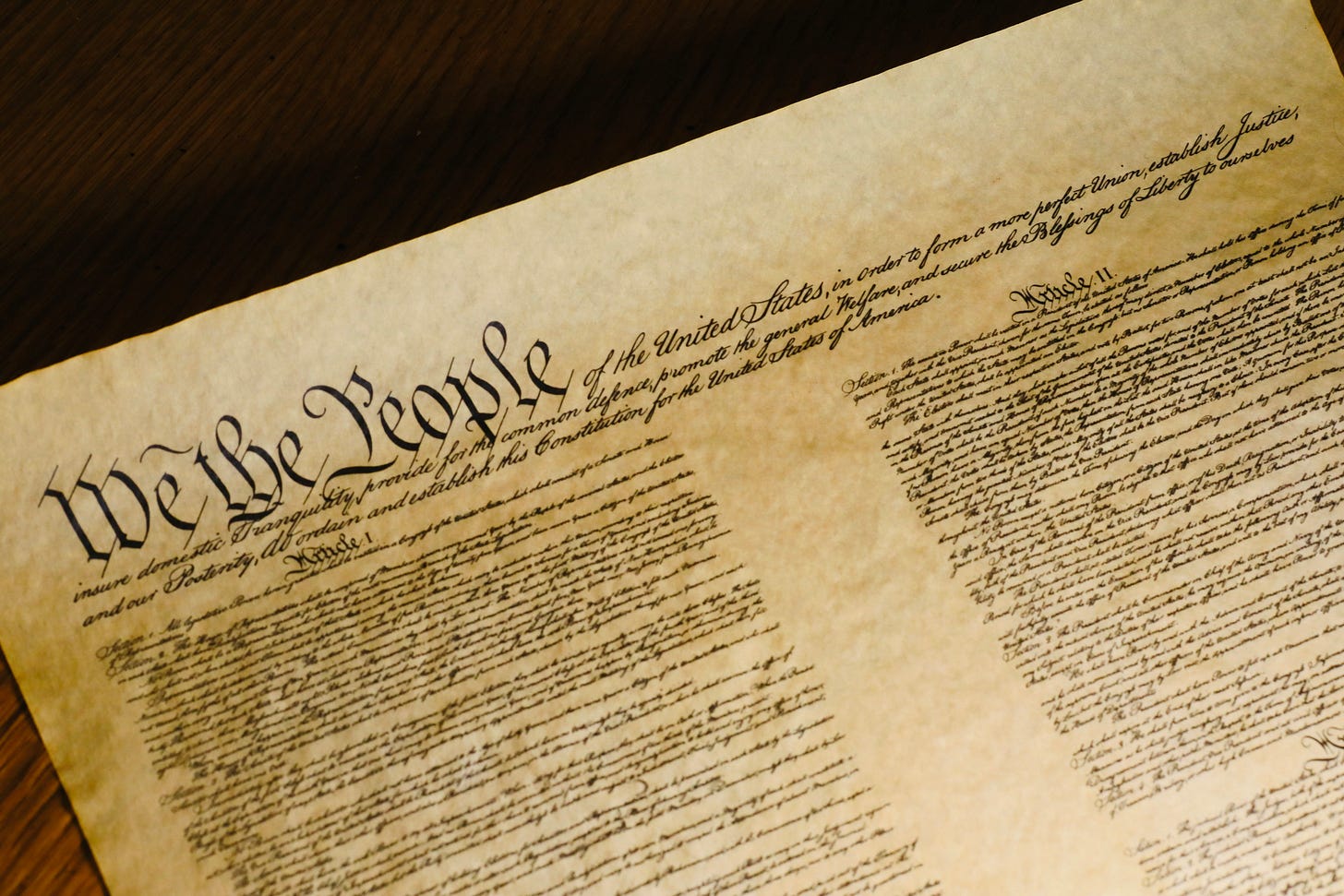So simple even a Congressman could understand
The feds will owe so much interest that they won’t be able to pay it. Investors see a reckoning coming; they demand higher interest rates to cover the risk, raising the feds’ interest cost even more.
Friday, April 12th, 2024
Bill Bonner, reckoning today from Dublin, Ireland...
Yesterday we had just gone to press when we got a news flash from colleague Dan Denning in our Laramie research hub:
The Treasury Department says the US Government ran a $1 trillion deficit in the first half of the fiscal year. According to the figure from the Monthly Statement of the Treasury, total Defense spending for the first half of the year was $433 billion. Net interest expense was the fourth largest expense at $429 billion (Social Security was first at $715 billion and Medicare/Medicaid second at $449 billion).
Dan comments:
You can have your guns. And you can have your prescription drugs. But in America 2024, I'm not sure how much longer you can have both. It all comes with rising prices, rising rates, and seemingly no way out.
The problem is so simple even a Congressman could understand it. The feds spend too much money. The difference between what they get in tax revenues and what they spend in boondoggles, bombs, and patent medicines must be covered either by borrowing or ‘printing’ money.
Both come with suicide tablets.
“The Fed is caught between a rock and a hard place,” says Stephanie Pomboy of MacroMavens. If the feds borrow the money, they need to pay interest. The more they borrow, the more interest they pay. Unless they stop spending, they need to borrow more and more.
Sooner or later, the feds will owe so much interest that they won’t be able to pay it. Investors see a reckoning coming; they demand higher interest rates to cover the risk, raising the feds’ interest expense even further.
Prohibitively Expensive
Historically, the point-of-no-return comes when government debt reaches 130% of GDP. This is not an arbitrary number. It’s when the feds lose control. And it could come as early as the end of next year. That was the conclusion reached by an AI when it was given IMF numbers from 2001 to 2024 and asked to project them into the future.
Here’s what happens. At 5% interest, on debt equal to 130% of GDP, last year the feds would have paid $1.6 trillion in interest — or a third of tax revenues.
Already, tax revenues only cover 75% of federal spending. That’s an operating loss equal to a third of income; the feds lose 33 cents on every dollar of revenue. And every year, the loss increases as interest costs increase. Soon, it becomes prohibitively expensive. When that happens, the politicians typically resort to printing more money. That’s when the misery arrives. Prices rise. People get poorer.
Typically, too, inflation undermines key institutions, notably the government itself — leading to political and social chaos as well as widespread poverty.
Even the earnest, mainstream media has begun to notice the problem. Here’s Martin Wolf, writing in the Financial Times:
All this threatens to create a vicious circle in which high perceptions of risk raise interest rates above likely growth rates, thereby making fiscal positions less sustainable and keeping risk premiums high.
At some point, surely, Stein’s law would bite: investor resistance to further rises in debt would jump and then monetisation, inflation, financial repression and a global monetary mess would ensue.
The IMF blog argues that, “first and foremost, countries should start to gradually and credibly rebuild fiscal buffers and ensure the long-term sustainability of their sovereign debt”.
Right. Rebuild those ‘buffers.’ ‘Ensure the long-term sustainability of their sovereign debt.’ Blah. Blah. Get right on it.
What they really need to do... the only thing they can do... is the very thing they don’t want to do — cut spending. Drastically. If it is true that the US spends $1.33 for every dollar of revenue, it has to cut 33 cents to get to break even. That’s the equivalent of about $1.5 trillion from the federal budget.
Since most of what the feds spend is unnecessary, that should be easy to do. But politically, it is almost impossible. Every dollar of spending goes into someone’s pocket. And that someone is politically powerful, otherwise the dollar wouldn’t have gotten there in the first place. Getting it out of his pocket will be a real struggle.
On the other hand, if the money keeps flowing at the same rate a disaster is almost guaranteed.
Prepare for Battle
In this situation, a tough businessman would gird his loins, put the knife between his teeth and prepare for battle. His back to the wall, he would do what he had to do to reduce expenses... or go out of business.
But how does a modern democracy — with all its pressure groups, constituents, lobbyists, deadhead voters and jackass opinion mongers — make that kind of radical change?
Democracy is supposed to be the best form of government, because it adapts to changing circumstances and is able to switch leaders as necessary. Is it true? Has a democracy ever faced this kind of crisis? Has it ever done the right thing?
Let’s take a look... tune in on Monday.
Regards,
Bill Bonner
Market Note, by Dan Denning
Gold was up $40 after the close yesterday. The New York Times is trying to understand why Costco is selling $200 million worth of gold bars a month. Meanwhile, the momentum players took a dip on Apple at $166. The last time Apple was that low was back in October of last year when 10-year Treasury yields were nearing 5%. Have a look at the chart.


